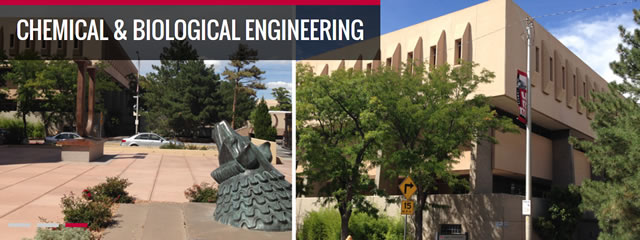
Chemical and Biological Engineering ETDs
Publication Date
5-26-1971
Abstract
Velocity, temperature and concentration profiles were derived for non-Newtonian laminar flow of a reacting species in a tubular reactor. The equation of motion based on a temperature dependent power-law fluid model and the energy equation with internal heat generation caused by a first order chemical reaction were coupled and solved simultaneously using numerical methods to yield the profiles. The assumptions made in this study were: constant physical properties of the fluid (density, thermal conductivity and heat capacity). fully developed flow, wall temperature and negligible diffusion. Compartmentalized calculations resulted in velocity, temperature and reactant concentration profiles for both the axial and radial directions. The pressure gradient along the reactor was determined from the above equations and the continuity principle. These results should be useful in flow reactor design.
The pressure gradients, velocities, temperatures and reactant concentrations are interrelated. Due to the temperature-dependent rheological behavior of the fluid; the axial pressure gradient varied with the temperature in the system. The radial temperature distribution distorted the downstream velocity profiles significantly from the entering profile. The radial temperature profile exhibited a peak located between the reactor wall and centerline. This maximum temperature was explained in terms of the internal heat generation and the relatively low thermal conductivity of the fluid. The extent of chemical reaction depends on the temperature and residence time of the fluid in the reactor. Consequently, the conversion near the reactor centerline was lessened by short residence times and that close to the wall was greater due to longer residence times. The wall temperature had an important effect on the reactant concentration profiles. With a low wall temperature, the reaction near the wall was retarded. Two reactant concentration peaks were observed in contrast to a single maximum at the reactor centerline in the case of a higher wall temperature.
Document Type
Thesis
Language
English
Degree Name
Chemical Engineering
Department Name
Chemical and Biological Engineering
First Committee Member (Chair)
Kenneth Edward Cox
Second Committee Member
Richard K. Traeger
Third Committee Member
George Heinz Quentin
Third Advisor
James H. Turner
Recommended Citation
Ahagon, Asahiro. "An Analysis of the Behavior of a Non-Newtonian Fluid in a Flow Reactor." (1971). https://digitalrepository.unm.edu/cbe_etds/75


